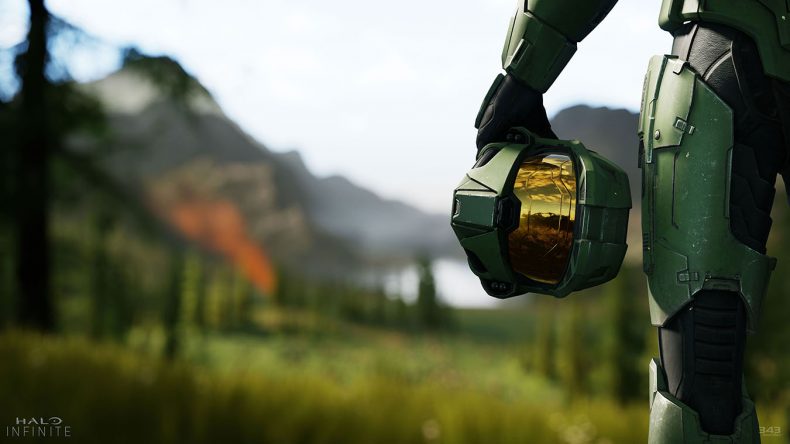Believe it or not, Halo has been in our lives for seventeen years. Seventeen. I remember when I bought my first Xbox, or rather our first Xbox, as my brother and I paid half each because we wanted the new Championship Manager game. Part of me simply refused to buy Halo, because it was the only game Xbox owners would talk about, and I was a stubborn idiot. Well, more so than I am now.
Obviously, something changed.
I managed to borrow a copy of Halo: Combat Evolved, to see what all the fuss was about. Within 24 hours I had bought my own copy, because that stubborn idiot was wrong and ended up falling in love with the Master Chief and his wisecracking sidekick, Cortana. The visuals were astonishingly good at the time, showing off the power of Microsoft’s first home console, and the gameplay was light years ahead of anything else in the FPS market.
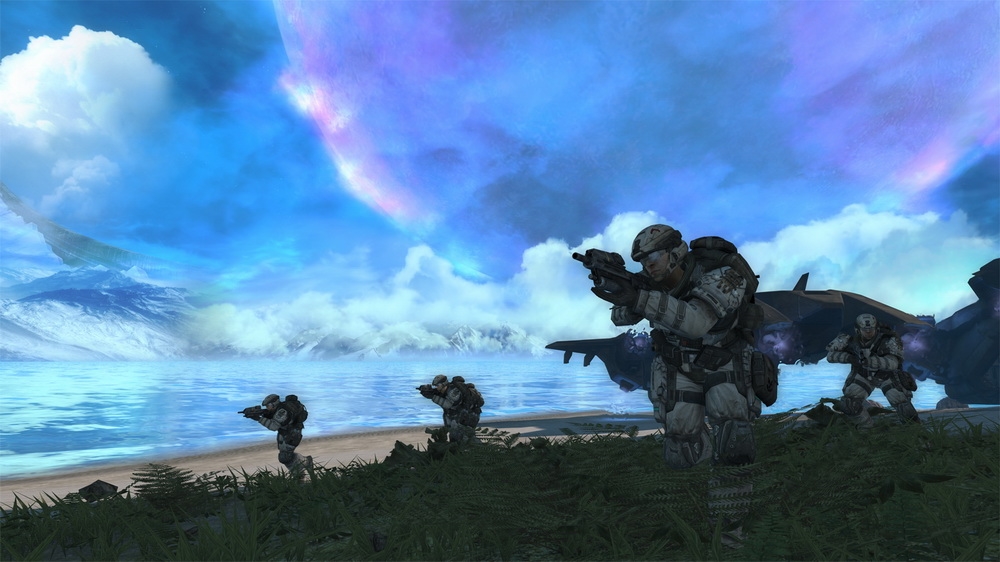
But there was something about the story of Halo, the depth of the lore surrounding it, that made the game more than “just another shooter.” Who/what were the Covenant, and why were they chasing down the Pillar of Autumn? What were the Spartans, and why did everyone stare and comment when they saw one? These were just some of the things I thought about, and that was before the Flood were introduced into the story and the true nature of the Halo became known.
Of course, as I said above, I just loved the interplay between the Chief and Cortana. From the moment she’s inserted into his suit and comments on how its architecture is similar to the Pillar of Autumn’s controls, you could tell there was already a bit of a “buddy movie” vibe to their relationship. Of course, there was an arguably romantic undercurrent to it too, which I never really subscribed to, and that only built over the course of the series. However you view these two characters, there is no denying the iconic status that they have earned, both in gaming and in pop culture as a whole.
That iconic status extended to the game itself too, and was cemented by that moment at E3 2004, when Peter Moore revealed Halo 2’s release date with a tattoo on his arm. Yep, that was the sort of daft publicity stunt that was around back then.
Before that, back at E3 2002, came a trailer that still makes the hairs on the back of my neck stand on end. In around two minutes, Microsoft showed the briefest glimpse of Halo’s first sequel, and captured the imagination of so many people. Master Chief getting ready for battle, overlaid with radio transmissions and Cortana’s reassurance that reinforcements were on the way, with Master Chief looking out of a hangar bay window, over a wartorn Earth.
“What if you miss?” Cortana asks.
“I won’t,” Master Chief assures her, pulling the lever to open the hangar bay doors, before diving out into space.
As if that wasn’t enough, Martin O’Donnell’s iconic (there’s that word again) Halo theme kicked in as the Chief descended towards a Covenant ship, still in orbit.
Halo 2’s reception was huge for Microsoft, sealing the flagship series’ place in gaming history, especially as it brought with it the birth of Xbox Live. For those of you too young to remember the days before online gaming, Halo 2 was essentially the game that started it all on console. Halo: Combat Evolved was spectacular fun in splitscreen with friends, but Halo 2 brought players together from around the world, building on that brilliant (and often hilarious) experience.
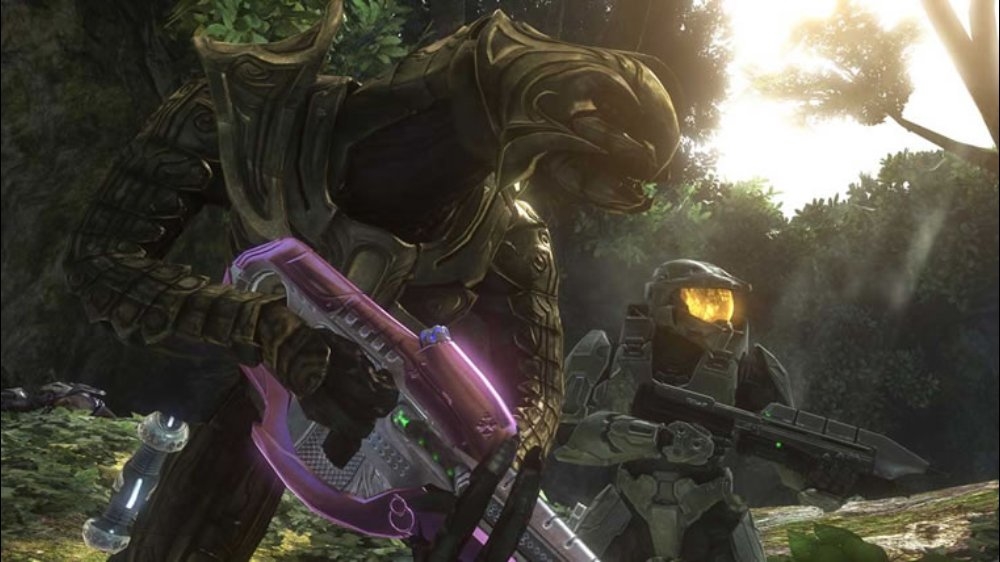
Quite simply, without Halo, online console gaming would not exist as it does today. Xbox Live is arguably still the pinnacle of online services for console, but it really exploded onto the scene proper in 2005, when the Xbox 360 arrived. Unfortunately, there was no Halo to launch with the new console, though Halo 3 was announced a year later and its “believe” slogan became an internet sensation. When the game arrived in 2007, it was a massive hit, with more than one million online players in the first day. That may not seem like much now, with the huge numbers of players heading online after midnight launches and whatnot, but in 2007 it was a huge deal.
But what about that story – was it still as interesting and important after three games? You bet it was. While it’s true that Halo 2’s ending was abrupt and divisive, also making the wait for Halo 3 unbearable, I think most were happy with how the trilogy was wrapped up in its final chapter. The threads of the previous stories intertwined beautifully, with the Elites, Flood and UNSC forces all battling to save/destroy not only Earth, but the entire universe. The stakes were raised, as was the quality of the storytelling and cutscenes, but the gameplay remained as smooth and tactical as ever.
That’s not to say that Bungie rested on its laurels. Far from it, in fact. To this day, Halo 3 is remembered by many as the best in the series, thanks to some incredible level design and perfectly balanced gameplay. This was especially evident in the “Cortana” chapter, though I won’t spoil anything, for those that haven’t yet played the game.
After Halo 3, the series went in a different direction for a little while. It looked back, telling stories from the past. It also moved into a new genre with the RTS Halo Wars, telling a new story set 20 years prior to Combat Evolved, introducing a whole new cast of characters from a brand new UNSC ship, the Spirit of Fire.
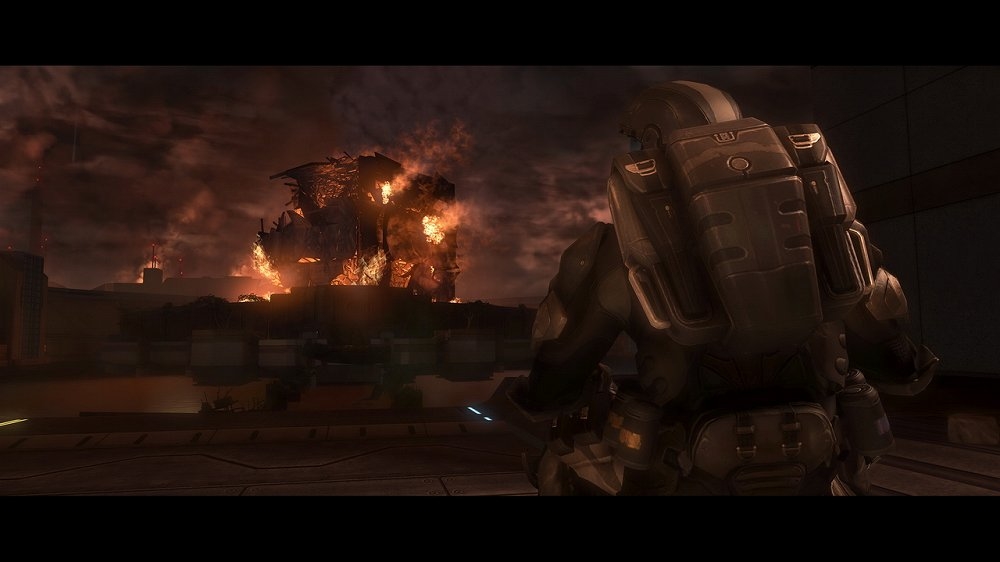
Back in FPS land however, Halo 3: ODST told the story of an ODST (Orbital Drop Shock Troopers) squad and was set during the events of Halo 2, on the Covenant-occupied Earth. It also introduced Buck, played by Nathan Fillion (alongside his fellow Firefly actors Adam Baldwin and Alan Tudyk, as well as Battlestar Galactica’s Tricia Helfer), who would return as a major character in Halo 5: Guardians.
Personally, I loved ODST. After the big, bombastic stories of the main games, the story of the Rookie and his ODST unit was a smaller, more human tale. Not that it didn’t include some big battles, it just wasn’t the sprawling action blockbuster of the numbered entries, and that’s what gave the game its unique feel. It also introduced Firefight, a multiplayer horde mode that could be played with up to three other players online. I had some good times on there.
Perhaps my biggest foray into Halo’s online modes came in the next spin-off, Halo: Reach. Myself and a few friends had ridiculous fun playing Grifball, especially. But the multiplayer isn’t why Reach is remembered so fondly, or why it was so celebrated when Xbox recently announced it was in development for the Master Chief Collection. Halo: Reach was Bungie’s swansong before moving away from Microsoft to develop Destiny, and its quality is testament to a team that wanted to end on the highest note possible.
Halo: Reach was based on the tie-in novel The Fall of Reach by Eric Nylund, and told the story of the events leading up to Halo: Combat Evolved. The Covenant have wiped out most of humanity’s colonies, with Reach the next one in line, and a team of Spartans are sent to investigate a communications relay that has gone offline. This team, designated “Noble”, discovers the first wave of Covenant to land on Reach.

What made Halo: Reach’s storyline so powerful was that you knew from the very beginning what would happen. It’s right there in the opening scene, yet somehow you fight on, thinking that maybe you can change the course of history somehow. And man, that post-credits section was a real punch in the gut, and one of the absolute best moments in the Halo series.
Alas, what followed was arguably the most divisive moment in the series. After Bungie left, there was no way Microsoft would let its flagship title die, and so 343 Industries was born. Soon after, Halo 4 was announced as the beginning of a new trilogy, telling the story of the Forerunners, a race of godlike beings that have been around since before humanity existed. Now, I love Halo 4 and will fight to the hilt of an Energy Sword to defend it, but it was, let’s just say, poorly-received by many. Let’s just leave it at that.
Halo 4 has its issues with its new enemies the Prometheans, and their weaponry being a little too similar to the UNSC armaments, but ultimately it offers another evolution of the core gameplay that has been the backbone of the whole series. The thing I love about it, as with almost every instalment in the series, is its story. Halo 4 is as much about Master Chief and Cortana, as it is about the Prometheans and their leader, the Didact. I would argue that Halo 4’s story is perhaps the best in the entire series, rivalling Reach for its emotional impact.
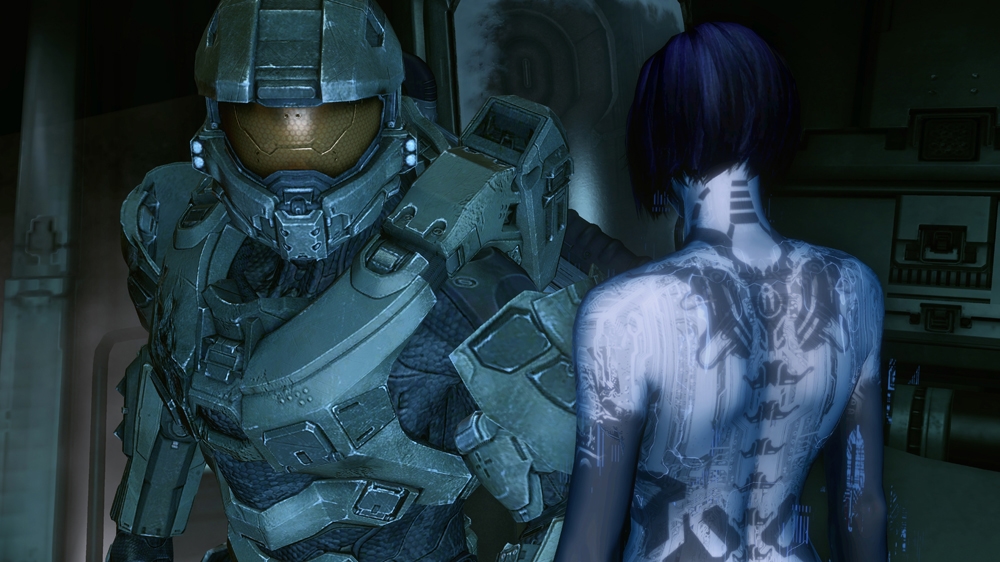
Which leads me to why I was so disappointed when Halo 5: Guardians arrived. The first original outing on Xbox One, there’s no getting around how gorgeous it was. Still is, actually. However, its gameplay, despite the addition of squads, felt a little too by-the-numbers and its story completely undid all the good work 343i did in Halo 4. Cortana’s role as a villain, the endless battles with the caretaker, and being forced to play as a character nobody really cared about in Spartan Locke; I just couldn’t work out why 343i would make such strange choices with a franchise that I loved. Why they would make such huge mistakes.
Still, my faith in Halo was restored not by 343i, but by Creative Assembly. In a move that I certainly didn’t see coming, Xbox decided to commision a sequel to Halo Wars, and in doing so managed to tell a story that truly felt like vintage Halo. Halo Wars 2 picks up 28 years after the Spirit of Fire was left drifting in uncharted space, as the crew awakens from cryosleep near the Ark, a Forerunner installation capable of building Halo rings. What follows is not only a cracking game that I thoroughly recommend playing (it’s on Game Pass, just FYI), but also an introduction to one of Halo’s greatest villains, Atriox. And honestly, it features one of my favourite cutscenes in all of gaming, thanks in part to the beautiful work done by Blur Studio, famous for its work on other Halo CG scenes, most notably in Halo 2: Anniversary.
Halo Wars 2 also takes place after Halo 5: Guardians, but ties into that underwhelming sequel’s storyline nicely, leaving me with some hope going into the next chapter of the Halo series.
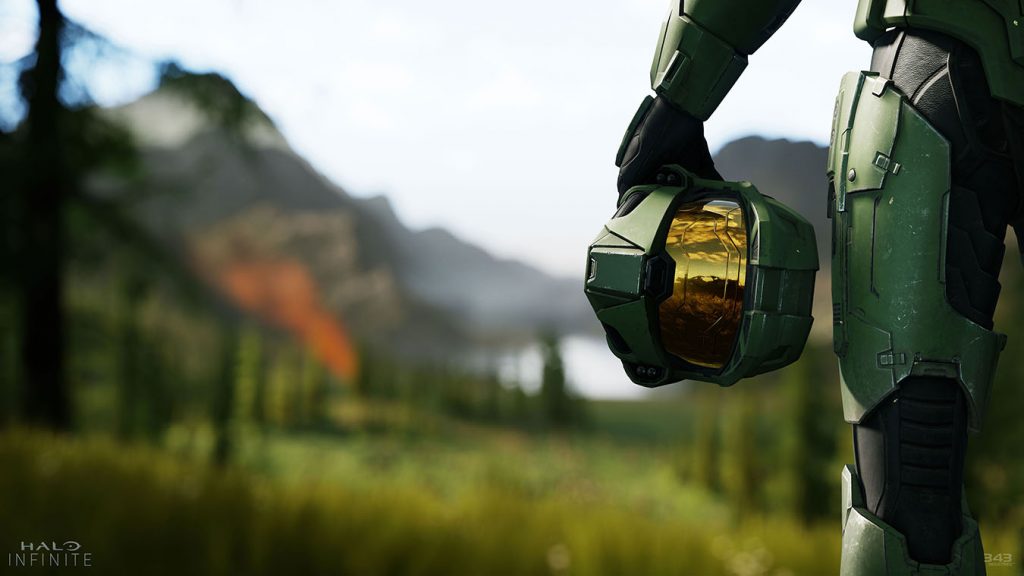
To that end, we arrive at E3 2018 and the Xbox briefing. I wanted Halo to be there but wasn’t expecting anything really. To my surprise, despite my disappointment in Halo 5, the sight of Master Chief and the sound of that distinctive Halo music got my heart racing. I found myself smiling, my eyes misty as only happiness and excitement can cause, and I found myself with that feeling that almost abandoned me: hope. Hope that Halo would once again be one of the best games out there, with a story that would pull at my heartstrings and fill me with joy.
There is no doubting that Xbox has struggled with its exclusives over the past couple of years, though it obviously isn’t without some top notch ones like the evolving Sea of Thieves and the magnificent Forza Horizon series, and I think now is the perfect time for Halo to return to form. After it was announced by Bonnie Ross that Halo Infinite will be at E3 2019, I find myself in a quietly optimistic state, though I also find myself wondering if it will actually arrive on the current Xbox, or whether it will be a launch title for whatever Xbox has up its sleeve for the next generation of consoles.
Either way, I hope that 343 Industries has learned from its mistakes with Halo 5. I hope that Halo Infinite follows in the footsteps of Halo Wars 2, creating a compelling story with great characters, and possibly bringing the Spirit of Fire and Atriox’s Banished along for the ride. I hope that Master Chief is returned to his former glory, and that Cortana’s good name is restored along with our Spartan hero.
I hope.
But more than that, as Halo 3 once put it…
I believe.


